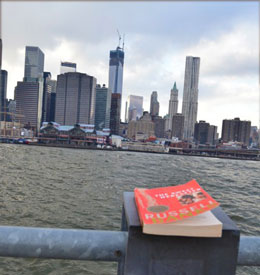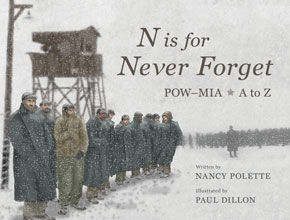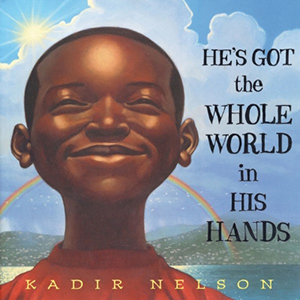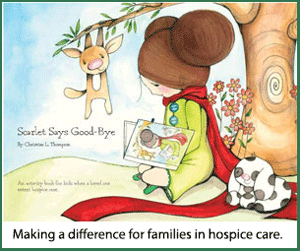The idea an entire city could be convinced to read the same book over the course of a year seems like a far-fetched, if not impossible, dream. Aside from the most obvious and daunting logistics needed to jumpstart a city-wide read-along, organizers must consider what one book could be so appealing it would grab the attention of an entire city. This thought may have crossed the mind of Nancy Pearl, author, librarian, and former executive director of the Washington Center for the Book at the Seattle Public Library, but she was driven by a vision to bring in new readers by offering a new way to encourage reading within a community.
In 1998, Pearl ambitiously created “If All of Seattle Read the Same Book,” a program that invited the entire city to read one book and then come together to share their thoughts, ideas, questions, and criticisms. “We wanted to bring in people to think about literature and what literature can do,” says Pearl. “One of my big interests is the way literature can create a community out of a diverse group of readers.”
But how easy would it be to attract readers from all backgrounds, ethnicities, and genders to a communal reading program? With these considerations, Pearl was careful about her book selection. That first year, she chose Russell Banks’ The Sweet Hereafter, a book that examines the aftermath of a tragic event in a small town in the Adirondack Mountains. Knowing that the loss of a loved one was a theme to which everyone could relate, Pearl was confident the book would strike the right chord with Seattle residents. It was imperative to choose a book that would elicit some kind of discussion and, according to Pearl, one that would “focus on an aspect of what it means to be human.”
Endowed with a grant from the Lila Wallace Reader’s Digest Foundation, Pearl attained the resources to market her new program throughout the city. Advertising through posters, pamphlets, and radio broadcasts, Pearl quickly realized she had an eager community. A conversation with strangers serves as a good reminder that communities thrive through genuine interaction. The fact a book can stimulate such involvement and interaction is an exciting realization.
Pearl, an avid book-lover as well as the author of the best-selling Book Lust series, never imagined her program would grow to what it has now become. Commonly called One City, One Book, the Library of Congress now estimates there are more than 400 community reading programs in cities across the country. Pearl credits the success of the program not to her hometown, but to book lovers in Chicago, who decided to launch the program in the fall of 2001 with Harper Lee’s To Kill A Mockingbird. There, in a city much larger than Seattle, the program received the media attention it so deserved.
But Chicago also recognized the need to choose a book that would generate discussion and attract a large crowd. Annie Tully, director of One Book, One Chicago, explained their reason for choosing such an iconic read. “We were just past September 11th, and there was a need for something communal and positive. Also, the banning of the book in an Oklahoma school district received a lot of attention the very day we announced that all of Chicago would be reading it. We take particular pride in the fact that we were holding up a book that elsewhere was being questioned.”
In this digital age, when paperbacks are tossed to the wayside in favor of more interactive media, many might fear for the book. But, one by one, more libraries are successfully launching city-wide reads of their own, giving reassurance to grieving bibliophiles that a good book can still survive and even flourish in group settings. Now, iterations of Pearl’s initial vision can be found from San Francisco to Saratoga Springs. The success of the program begs the question: Is the communal reading experience integral to the success of the book, and vice versa? As Tully puts it, “successful, highly functioning communities are made up of people who engage with each other, and we facilitate that engagement through this program.”
As more and more people participate in One City, One Book, there is more opportunity for growth and expansion. Authors often travel to communities where their books are being read and participate in readers’ discussions. One Book, One Chicago is seeing upwards of 12,000 participants a year, making it necessary to revamp the program in order to more effectively involve the community.
Over the course of the next few months, Tully explains, the Chicago Public Library will offer programming that expands on its selected book’s theme, from lectures and workshops, to films and performances. Having chosen Isabel Wilkerson’s The Warmth of Other Suns this year, Tully plans to build events and discussions around the central theme of “migrations.” With these new additions, the book may not be the sole focus of the program, but with a universal topic, it will generate more involvement and more discussion among participants.
The One City, One Book programs are straightforward in their mission. Make no mistake, Pearl says, this program will not fix any community problems. Nor does it aim to ever accomplish such ends. Economic gaps will persist, violence and homelessness and hunger and all those contentious issues that plague cities and small towns alike will continue. But fostering discussion, encouraging reading, and bringing together people of all backgrounds does have a significant impact on a community.
“A group of people who read the same book develop a common vocabulary,” says Pearl, “and when you have shared the experience of a book, especially a book that packs a wallop, I think that is something that brings people closer together.”
Photo credit: Erin J. Simpson
When she’s not writing or climbing the corporate ladder at her publishing job, you can find Erin scouring Brooklyn for good food and unique finds.
www.erinjsimpson.com











